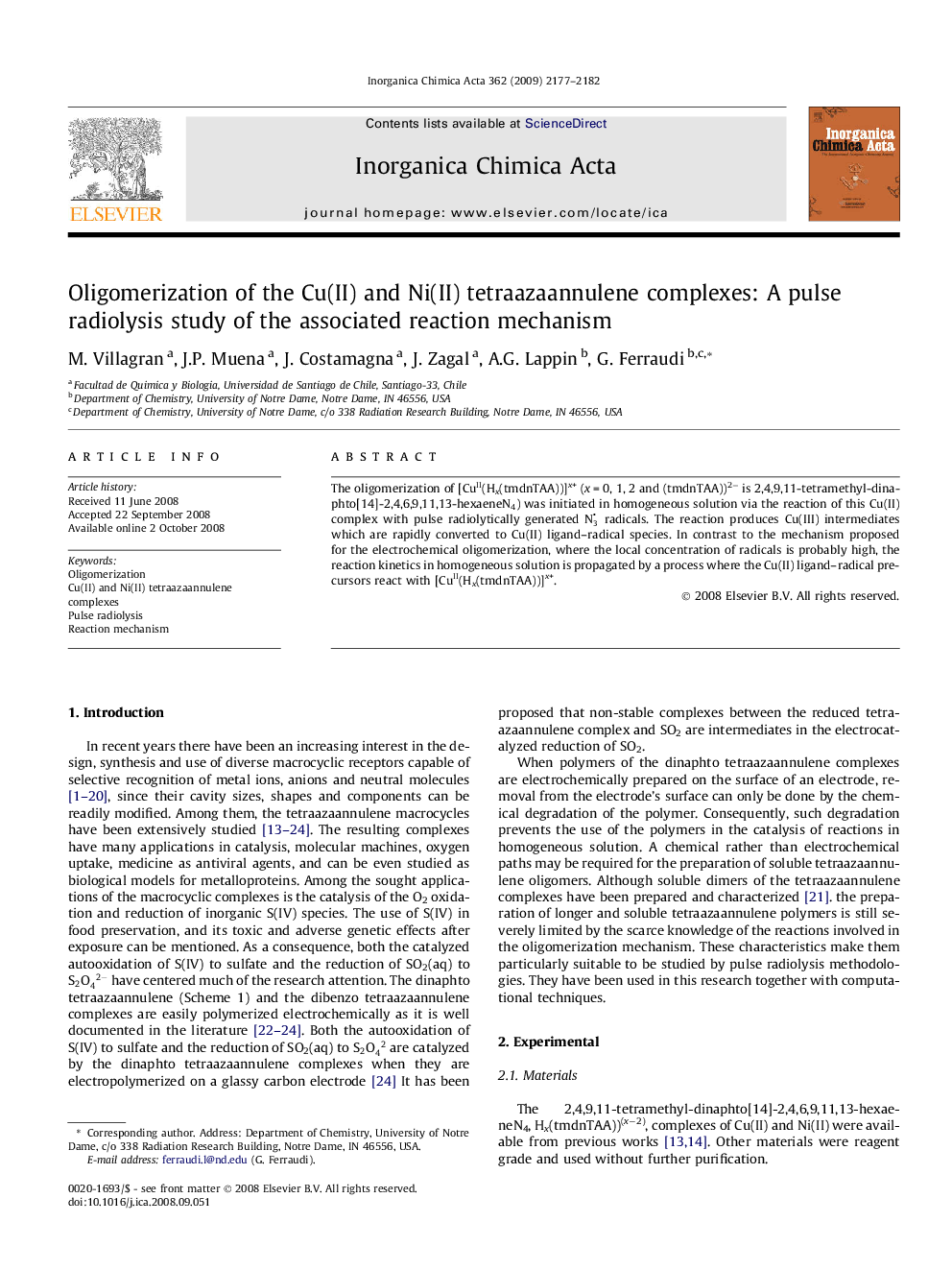| Article ID | Journal | Published Year | Pages | File Type |
|---|---|---|---|---|
| 1309837 | Inorganica Chimica Acta | 2009 | 6 Pages |
The oligomerization of [CuII(Hx(tmdnTAA))]x+ (x = 0, 1, 2 and (tmdnTAA))2− is 2,4,9,11-tetramethyl-dinaphto[14]-2,4,6,9,11,13-hexaeneN4) was initiated in homogeneous solution via the reaction of this Cu(II) complex with pulse radiolytically generated N3 radicals. The reaction produces Cu(III) intermediates which are rapidly converted to Cu(II) ligand–radical species. In contrast to the mechanism proposed for the electrochemical oligomerization, where the local concentration of radicals is probably high, the reaction kinetics in homogeneous solution is propagated by a process where the Cu(II) ligand–radical precursors react with [CuII(Hx(tmdnTAA))]x+.
Graphical abstractThe oligomerization of [CuII(Hx(tmdnTAA))]x+ (x = 0, 1, 2 and (tmdnTAA))2− is 2,4,9,11-tetramethyl-dinaphto[14]-2,4,6,9,11,13-hexaeneN4) was initiated in homogeneous solution via the reaction of this Cu(II) complex with pulse radiolytically generated N3 radicals. The reaction produces Cu(III) intermediates which are rapidly converted to Cu(II) ligand–radical species.Figure optionsDownload full-size imageDownload as PowerPoint slide
